The Media & Digital Textbooks
MEDIA COMPANIES, SEEING PROFIT SLIP, PUSH INTO EDUCATION
Chris Keane for the New York Times
By Brooks Barnes and Amy Chozick
LOS ANGELES — As another academic year starts, about 500,000 children across the country will find themselves learning subjects like middle school history or high school biology from a new line of digital textbooks. These manuals, branded Techbooks, come with all the Internet frills: video, virtual labs, downloadable content.
Last year, Discovery introduced its line of digital textbooks, called Techbooks. The manuals are used at Mooresville Middle School in North Carolina.
But the Techbook may be most notable for what it does not have — backing from a traditional educational publisher. Instead it has the support of Discovery, the cable TV company. Discovery, which also sells an educational video service to school districts, is entering the digital textbook market largely because it sees a growth opportunity too good to pass up.
company. Discovery, which also sells an educational video service to school districts, is entering the digital textbook market largely because it sees a growth opportunity too good to pass up.
Conventional K-12 textbooks are a $3 billion business in the United States, according to the Association of American Publishers, with an additional $4 billion spent on teacher guides, testing resources and reference materials. And almost all that printed material, educators say, will eventually be replaced by digital versions. “It’s kind of perfect for us,” said David M. Zaslav, chief executive of Discovery Communications, which owns networks like Discovery Channel, Animal Planet and TLC. “Educational content is core to our DNA, and we’re unencumbered — unlike traditional textbook publishers, we’re not defending a dying business.”
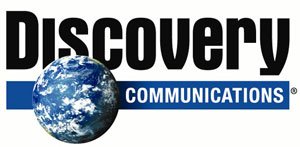 Mr. Zaslav is not the only media executive talking grandly about education these days. Movies, television, newspapers and magazines are in decline or facing headwinds, putting pressure on media companies to find new areas of expansion. Education is emerging as an answer, largely because executives see a way to capitalize on the changes that technology is bringing to classrooms — turnabout as fair play, given the way that the Web has upended major media’s own business models. “We think the opportunity continues to be to use digital technologies to be disruptive to an enormous business stuck decades in the past,” Chase Carey, News Corporation’s chief operating officer, told analysts this year.
Mr. Zaslav is not the only media executive talking grandly about education these days. Movies, television, newspapers and magazines are in decline or facing headwinds, putting pressure on media companies to find new areas of expansion. Education is emerging as an answer, largely because executives see a way to capitalize on the changes that technology is bringing to classrooms — turnabout as fair play, given the way that the Web has upended major media’s own business models. “We think the opportunity continues to be to use digital technologies to be disruptive to an enormous business stuck decades in the past,” Chase Carey, News Corporation’s chief operating officer, told analysts this year.
News Corporation is betting on just that. This month, the company said it would infuse its fledgling education division, Amplify, with $100 million. Amplify, focused on digital teaching and assessment tools, is run by Joel I. Klein, the former New York City schools chancellor. Rupert Murdoch, the chief executive of News Corporation, has said he would be “thrilled” if education were to account for 10 percent of its revenue five years from now.
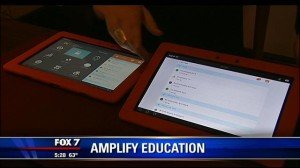 Old-line education companies, however, may be more difficult prey than Mr. Zaslav and Mr. Murdoch think. Pearson, McGraw-Hill and Houghton Mifflin Harcourt are introducing digital educational products of their own, and these stalwarts have a technology giant on their side: Apple, seeking to bolster iPad sales, recently started selling digital high school textbooks through its iBooks store, with those three publishers as partners. “Over the last 10 years alone, we’ve invested $9.3 billion in digital innovations that are transforming education,” said Will Ethridge, chief executive of Pearson North America, part of Pearson P.L.C., the world’s largest education and learning company. “One way to describe it would be an act of ‘creative destruction.’ By this I mean we’re intentionally tearing down an outdated, industrial model of learning and replacing it with more personalized and connected experiences for each student.”
Old-line education companies, however, may be more difficult prey than Mr. Zaslav and Mr. Murdoch think. Pearson, McGraw-Hill and Houghton Mifflin Harcourt are introducing digital educational products of their own, and these stalwarts have a technology giant on their side: Apple, seeking to bolster iPad sales, recently started selling digital high school textbooks through its iBooks store, with those three publishers as partners. “Over the last 10 years alone, we’ve invested $9.3 billion in digital innovations that are transforming education,” said Will Ethridge, chief executive of Pearson North America, part of Pearson P.L.C., the world’s largest education and learning company. “One way to describe it would be an act of ‘creative destruction.’ By this I mean we’re intentionally tearing down an outdated, industrial model of learning and replacing it with more personalized and connected experiences for each student.”
On a smaller scale, NBC Universal has been building a service called NBC Learn, which digitizes and archives video and articles from NBC News to sell as a database and digital blackboard learning system; NBC Learn now operates in 5,000 schools in 43 states.
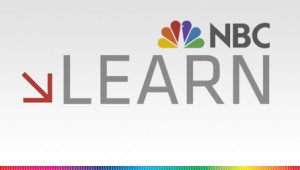 The Financial Times, owned by Pearson, is pushing MBA Newslines, a subscriber-only feature on its Web site that lets business students and professors create and share annotations on articles, allowing case studies to be built around real-time news events.
The Financial Times, owned by Pearson, is pushing MBA Newslines, a subscriber-only feature on its Web site that lets business students and professors create and share annotations on articles, allowing case studies to be built around real-time news events.
And then there is the Walt Disney Company. It is building a chain of language schools in China big enough to enroll more than 150,000 children annually. The schools, which weave Disney characters into the curriculum, are not going to move the profit needle at a company with $41 billion in annual revenue. But they could play a vital role in creating a consumer base as Disney builds a $4.4 billion theme park and resort in Shanghai.
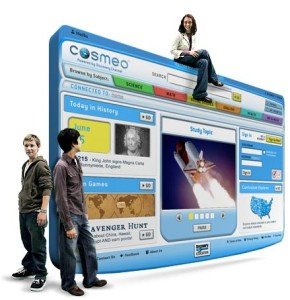 Media companies have dipped their toes into education before, of course, only to find chilly waters. Discovery in 2006 promoted COSMEO an Internet-based service that offered children videos and other tools to help them with their homework; a year later, Discovery decided to stop marketing the product, which cost $99 a year, and laid off much of its staff. (Why pay for help when you can search Google at no cost?)
Media companies have dipped their toes into education before, of course, only to find chilly waters. Discovery in 2006 promoted COSMEO an Internet-based service that offered children videos and other tools to help them with their homework; a year later, Discovery decided to stop marketing the product, which cost $99 a year, and laid off much of its staff. (Why pay for help when you can search Google at no cost?)
In 2007, Disney introduced a new position — senior vice president for learning — with the goal of moving into the North American education businesses. None of the company’s major efforts got off the ground, and Disney eventually pulled the plug, in part because it decided technology was changing the sector too rapidly.
News Corporation faces perception hurdles as it moves deeper into education — namely what some rivals refer to as the “Foxification” of schools, a pointed reference to Fox News Channel and its stable of conservative pundits. The company has said it has zero interest in inserting politics into schools, and notes that other assets, including the National Geographic Channel, which, like Discovery’s flagship channel, largely focuses on documentaries and educational programming, could play to the company’s advantage.
 Last year, the New York State comptroller, citing News Corporation’s phone-hacking scandal in Britain, rejected a $27 million contract with its education division. The decision underscored one of the biggest hurdles faced by companies entering the education market: new products must typically gain state approval before schools even have the chance to decide to buy them.
Last year, the New York State comptroller, citing News Corporation’s phone-hacking scandal in Britain, rejected a $27 million contract with its education division. The decision underscored one of the biggest hurdles faced by companies entering the education market: new products must typically gain state approval before schools even have the chance to decide to buy them.
Wall Street is skeptical that education holds as much promise as some media companies think. “When big conglomerates feel their core businesses have started to mature, they look for related synergistic businesses,” said David Bank, an analyst at RBC Capital Markets. “You have to ask yourself, are those education businesses really related and synergistic in core?”
 Bill Goodwyn, chief executive of Discovery’s education unit, says in his company’s case, the answer is an emphatic yes. He conceded that COSMEO “lost a lot of money,” but said that Discovery’s business had centered on education since its earliest days. Discovery Channel’s original name was Cable Education Network, for instance, and the company used to make money by shipping VHS cassettes of documentaries to schools.
Bill Goodwyn, chief executive of Discovery’s education unit, says in his company’s case, the answer is an emphatic yes. He conceded that COSMEO “lost a lot of money,” but said that Discovery’s business had centered on education since its earliest days. Discovery Channel’s original name was Cable Education Network, for instance, and the company used to make money by shipping VHS cassettes of documentaries to schools.
Discovery currently sells a popular subscription streaming service to schools, which comes with 50,500 video segments and 6,200 full-length videos on topics like math, social studies and language arts. The service costs $1,570 a year for a school that serves kindergarten through eighth grade; high schools pay $2,095.
Still, Discovery’s previous efforts pale in scope to its Techbook initiative. Mr. Goodwyn’s 200-employee division introduced the line of digital textbooks last year. Their cloud-based technology works with whatever hardware a district has — iPads, laptops, desktops. Discovery tailors them to the particular curriculum needs of various states (or districts within states).
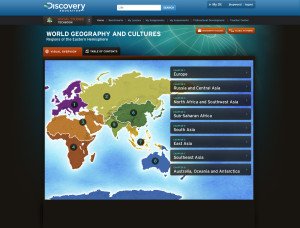 “As a 30-year veteran, it was not always easy giving up some of the more traditional ways of teaching,” said Roseann Burklow, a seventh-grade science teacher in Mooresville, N.C. “But I love the Techbook. Students are engaged and can work independently or collaboratively.” (She did suggest one improvement: more games to help students review material for tests.)
“As a 30-year veteran, it was not always easy giving up some of the more traditional ways of teaching,” said Roseann Burklow, a seventh-grade science teacher in Mooresville, N.C. “But I love the Techbook. Students are engaged and can work independently or collaboratively.” (She did suggest one improvement: more games to help students review material for tests.)
Traditional textbooks cost about $70 a student; Discovery’s Techbooks start at $38 a student for a six-year subscription and go up to $55, depending on the subject and grade level.
Discovery knows education will never pay its bills. Last year, the company’s learning products, for instance, generated adjusted operating income of $23 million, a 53 percent increase over a year earlier. In comparison, its United States cable networks delivered operating income of $1.5 billion, a 10 percent increase from a year earlier.
Still, Mr. Zaslav said the education unit’s small size did not dim his enthusiasm. “Television is always going to be our primary focus, but we’re incredibly excited about the business potential of the Techbook,” he said. “Education is an area of solid, sustainable growth.”



Recent Comments